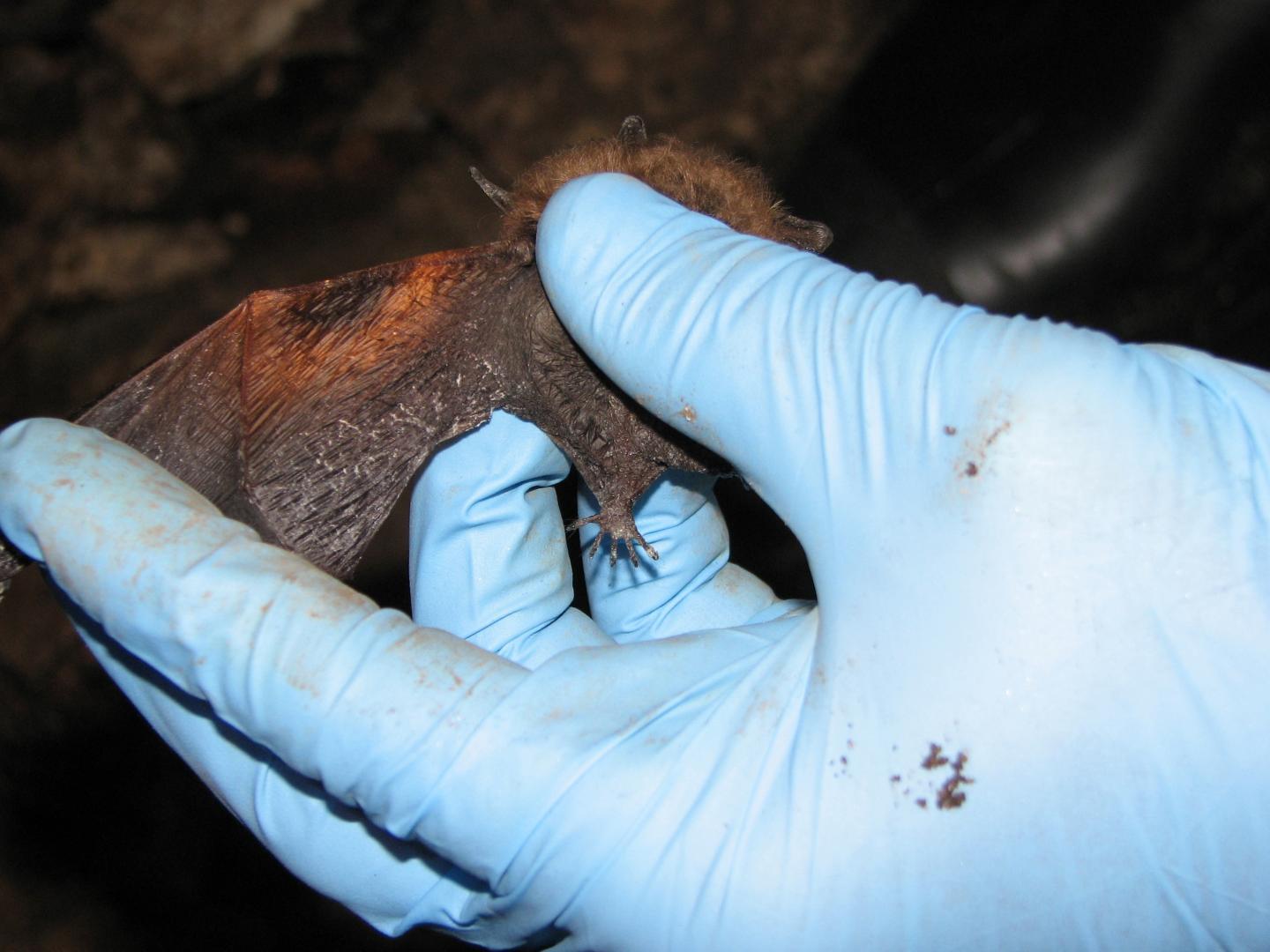A bat-killing disease is even more destructive than previously thought
This image shows wing damage from white-nose syndrome fungus in a little brown bat.
Bad news for bats: A new study on white-nose syndrome, which has killed more than five million bats in North America since 2008, reveals the disease starts its deadly progression well before any visible signs of illness.
“The unique aspect of this [new study] is that it has, for the first time, allowed us to piece together what happens from initial infection all the way through the end stages of the disease,” says David Blehert, the branch chief of the Wildlife Disease Diagnostic Laboratory at the US Geological Survey's National Wildlife Health Center. The findings are published in the journal BMC Physiology.
White-nose syndrome is a fungal infection that strikes bats as they hibernate. Not all species are affected, but so far there is no cure.
Blehert says researchers already knew the disease disrupted bat hibernation, but they were “surprised to learn just how severe the physiological impacts of the disease are on the bats — before we even begin to see the white fungus that gives the disease its name.”
When bats hibernate, they’re not actually sleeping: They’re just in a suppressed, torpid state. They don't eat during hibernation and have “a very tight energy budget,” Blehert says. About every two weeks or so, for reasons still not clearly understood, the bats come out of hibernation for about an hour or so and their bodily metabolism increases.
“These arousal periods are very tightly calibrated so the bats can undergo their normal hibernation physiology and still make it until spring emergence without having to consume any food,” Blehert explains.
As the disease progresses, the hibernation periods shorten and the number of arousals increase. “That's very expensive energetically to these bats that have to survive about six months without consuming any food or water,” Blehert says.
They also found that even before the bats began to behave in ways that would increase their energy consumption, they were already using twice as much energy as their healthy, uninfected counterparts.
“This disease accelerates the energy consumption process,” Blehert says, “and when there is only 10 or 20 percent, at most, of extra energy backup in their fat reserves, what you have are bats that can no longer survive the entire hibernation season until spring emergence. We have animals that are starving to death in their hibernacula.”
Even though they now have a complete picture of how the disease progresses, Blehert says it still remains a complicated problem,. Researchers can sometimes save or cure individual bats, but a treatment that can benefit larger bat populations remains elusive.
In the meantime, Blehert says, protecting bat habitats is key to supporting bat populations.
“All evidence suggests that humans were the cause that introduced this pathogen to North America in the first place," he says. "So I believe it's our responsibility to do all that we can to avoid spreading it further beyond the distance that the bats already move it on their own."
This story is based on an interview that aired on PRI's Science Friday with Ira Flatow
